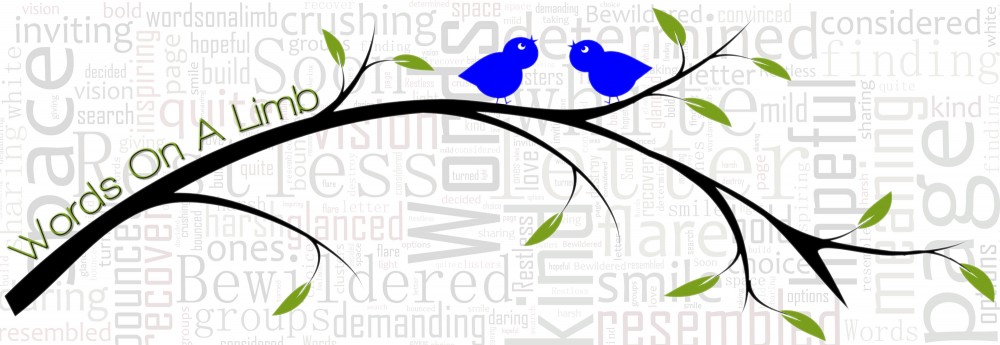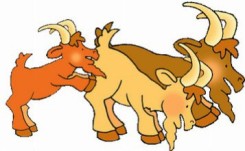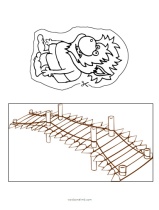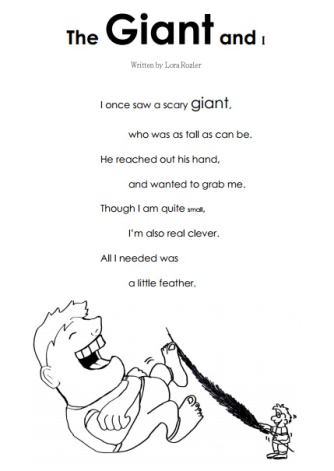 Nothing fills the classroom with more excitement and cheer – and gives you instant celebrity status (the coolest teacher ever) faster than the declaration of Game Time!
Nothing fills the classroom with more excitement and cheer – and gives you instant celebrity status (the coolest teacher ever) faster than the declaration of Game Time!
While students see this is as a well deserved break from all their hard work, what they don’t suspect is that it’s actually a way to consolidate their learning, albeit outside the typically structured setting (but they don’t need to know that). Playing cards reinforces important math skills (number sense; number recognition, counting, adding, subtracting), social skills (taking turns, sharing, sportsmanship) and builds on children’s strategic thinking and planning. As a teacher, of course, observing my students play is the perfect opportunity to also assess their strengths and weaknesses in these areas and plan future lessons based on their needs.
So go ahead – roll up your sleeves, gather eager players, hand out the cards and let the games begin!
A few notes:
- For the purpose of the games listed below, an ace represents the number one.
- Unless otherwise specified, each game is played in a group of 3-4 students, but can be modified to include more or less players.
- If you want your students to keep score, have some paper and pencils handy.
- Remind students to shuffle the cards well before each game.
CARD GAMES FOR THE CLASSROOM
Give Me Ten
Place all the cards facing down in the centre of the table. Each player picks up 4 cards and holds them up, not revealing their cards to the other players. Four additional cards are drawn and placed in the middle as the ‘bank’ reserve. The first player tries to match one of their cards with one from the bank to add up to 10. For example, if a player holds a 6 and the bank has a 4, they collect the card and place it aside as a ten-point. They can also add up to 10 by picking up various other combinations (i.e., 6, 2, 2 or 5, 1, 4) and by using as many of their cards as possible in one turn. The aim is to make as many sets of 10 as possible. If/when the bank is ‘empty’ the current player must put down any random card from their hand and the next player continues. With each round, players continue to pick up 4 cards and aim sets of 10. A king can only pick up a king, a queen only a queen, a jack can pick up all the number cards. When no cards remain, the player with the most sets of 10 wins the game. As an alternative, instead of adding to 10, choose another number (i.e., 11, 12).
One Hundred
Each player picks up 4 cards from the deck and place them face up. Players rearrange their cards and try to create number pairs that add up to 100, or else as close as possible. For example, the cards 9, 1, 4, 5, can be arranged to create two larger numbers: 51 and 49. When added together 51 and 49 equal 100. When everyone’s ready, they should share their final numbers. Whoever is closest to 100 receives a point. Play for 10 rounds. The player with the most points at the end of the final round wins.
Memory Game
Spread the cards face down on a table in a random pattern or in a grid. Players take turns turning over two cards while all the players can see them. If they are not a matching pair, they turn them back over. The next player turns over two cards. If they are a matching pair, that player removes them from the table and keeps them, and then has another turn. When all cards have been removed from the table, each player counts up the number of cards they have collected. The player with the most matching cards wins the game. This is a great game to enhance memory and concentration skills.
Bluff
Divide all the cards equally among the players. Players may organize their cards without showing them to the others. The first player places a card face down in the centre of the table saying ace. The next player must place down a card higher up in value (i.e., number 2). The following player discards threes, and so on. Players announce their cards as they lay them. After kings have been played, aces start again. Players can discard up to four cards at a time. Players don’t have to play the cards they announce – they can be bluffing. After each turn, any player can challenge the last player (if they believe they are lying) by saying You’re bluffing! When this happens, the challenger can look at the discarded cards. If they match what the person who played them said, the challenger picks up all cards in the discard pile and adds them to his personal pile. If the cards are not what the person said they were, the player who discarded them must pick up the entire discard pile. The player to lay down his entire hand of cards first will win the game.
Higher Up
Divide all the cards equally among the players. Cards facing down, each player turns over a card from their ‘bank’ and puts it down in the centre. When all of the players had a chance to put down a card, the player with the highest ranking card takes them all and places them aside. With each round, players continue to place down cards from their ‘bank’, until no cards remain. The player with the most cards at the end wins the game. As an alternative, the player that can make the most sets of ten wins the game (i.e., 5, 2 and 3 is one set of 10; 9 and 1 is another, a king and a king is a ten, etc.)
Crazy Eights
Each player is dealt five cards. The rest of the deck goes facedown in a pile, with the top card turned up beside it. This is the discard pile. The player to the left of the dealer discards a card from his hand that matches either the number or suit of the top card in the discard pile. For example, if the card is a five of hearts, he could play any heart or any five. If he does not have a matching card, he continues picking up cards from the deck until he gets one that is playable. Eights are wild and can be put down on any suit. For example, an eight could be played to match a heart. The next player must match their card to the number or suit that the eight was meant to cover. Play continues with players matching the card at the top of the discard pile. The first player to use up all his cards wins. If the deck runs out before the game is over, the discard pile can be used.
To download a free copy of Card Games for the Classroom for your personal use in the classroom, click on the image below.
Happy playing,
Lora


 Hello everyone. I hope you had a restful March break and are excited about the week ahead. I’d like to share a poem I wrote a little while back titled,
Hello everyone. I hope you had a restful March break and are excited about the week ahead. I’d like to share a poem I wrote a little while back titled, 


 One of my students favourite follow-up activities was to re-enact the poem using stick puppets. It is a wonderful way for them to practise retelling the story and have fun while doing so. Some benefits of using stick puppets to teach literacy include strengthening oral vocabulary, acting in role, building comprehension, retelling a story in sequence, and recalling details.
One of my students favourite follow-up activities was to re-enact the poem using stick puppets. It is a wonderful way for them to practise retelling the story and have fun while doing so. Some benefits of using stick puppets to teach literacy include strengthening oral vocabulary, acting in role, building comprehension, retelling a story in sequence, and recalling details.




 As I go through the story again (generally over the span of a few days), I take a moment after each verse to introduce a math fact or draw a composition of the monkeys in relation to the bed (i.e., 5 monkeys on the bed and 0 on the ground; 5 + 0 = 5). By the end of the story, we cover all the combinations of five. While we review the math facts, I draw their attention to the pattern that emerges (i.e., when the number of monkeys on the bed decreases the number of monkeys on the ground increases). For the rest of the week, I invite 5 different students each day to come up and re-enact the poem while we sing to it. We continue to review the math facts as we go along.
As I go through the story again (generally over the span of a few days), I take a moment after each verse to introduce a math fact or draw a composition of the monkeys in relation to the bed (i.e., 5 monkeys on the bed and 0 on the ground; 5 + 0 = 5). By the end of the story, we cover all the combinations of five. While we review the math facts, I draw their attention to the pattern that emerges (i.e., when the number of monkeys on the bed decreases the number of monkeys on the ground increases). For the rest of the week, I invite 5 different students each day to come up and re-enact the poem while we sing to it. We continue to review the math facts as we go along. As an extension, and one that students really enjoy, I have students re-enact the story/song using stick puppets. They begin by colouring and cutting out a template of the bed and the 5 monkeys. Then they glue a popsicle stick to the back of each monkey and take turns re-enacting the story/song to a partner. By the end of the week, the stick puppets get sent home with a letter to parents.
As an extension, and one that students really enjoy, I have students re-enact the story/song using stick puppets. They begin by colouring and cutting out a template of the bed and the 5 monkeys. Then they glue a popsicle stick to the back of each monkey and take turns re-enacting the story/song to a partner. By the end of the week, the stick puppets get sent home with a letter to parents.
 A great way to gage students’ understanding of the concept and evaluate their learning is to have them repeat this activity with bingo dabbers (one colour representing the monkeys on the bed, and another representing the ones on the ground). Each student gets 6 bed templates and uses two colour dabbers to show the various combinations the monkeys could be arranged (i.e., 3 dabs on the bed, 2 on the ground).
A great way to gage students’ understanding of the concept and evaluate their learning is to have them repeat this activity with bingo dabbers (one colour representing the monkeys on the bed, and another representing the ones on the ground). Each student gets 6 bed templates and uses two colour dabbers to show the various combinations the monkeys could be arranged (i.e., 3 dabs on the bed, 2 on the ground).
 Here is a card game I made to help students practice their facts to five and sharpen their memory skills while they’re at it. After introducing it as a whole class activity, I left it at the math station for students to play with during Centre time. I will be sending home a template of the game for families to assemble and enjoy during the March break as well.
Here is a card game I made to help students practice their facts to five and sharpen their memory skills while they’re at it. After introducing it as a whole class activity, I left it at the math station for students to play with during Centre time. I will be sending home a template of the game for families to assemble and enjoy during the March break as well.

 Happy Monday everyone. I’d like to share a poem I wrote a couple of years ago and plan to share with my students this week, as we begin exploring the concept of measurement. The Giant and I is a charming poem about a little boy who outsmarts a fearsome giant. It opens up a great discussion about the various ways the characters could be described (big, small, tall, short, heavy, light, wide, narrow, etc.) hence setting the stage for building the appropriate vocabulary for the unit. A follow-up activity is included, integrating concepts about size and shapes.
Happy Monday everyone. I’d like to share a poem I wrote a couple of years ago and plan to share with my students this week, as we begin exploring the concept of measurement. The Giant and I is a charming poem about a little boy who outsmarts a fearsome giant. It opens up a great discussion about the various ways the characters could be described (big, small, tall, short, heavy, light, wide, narrow, etc.) hence setting the stage for building the appropriate vocabulary for the unit. A follow-up activity is included, integrating concepts about size and shapes. Click on the image of the giant to download a copy of the poem and worksheet for your personal use in the classroom.
Click on the image of the giant to download a copy of the poem and worksheet for your personal use in the classroom.